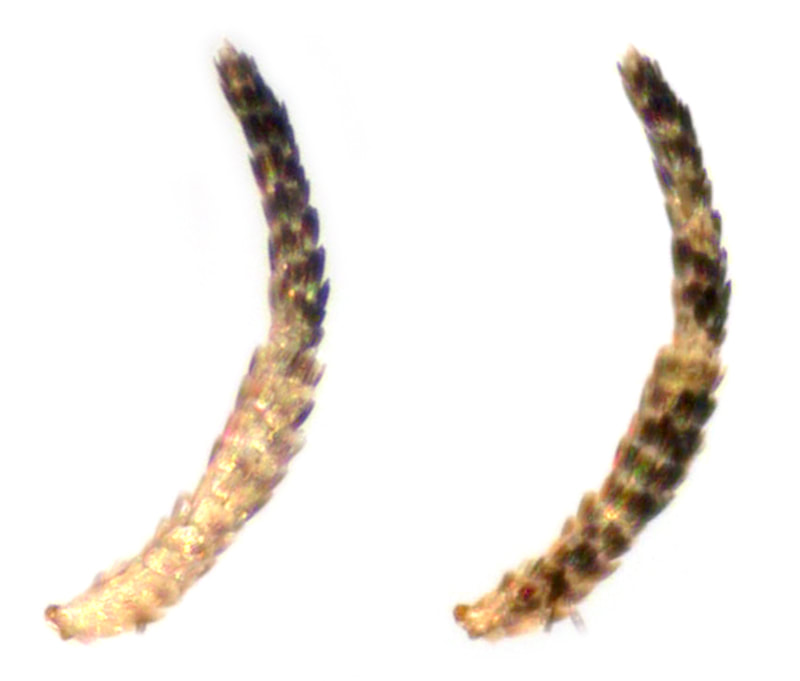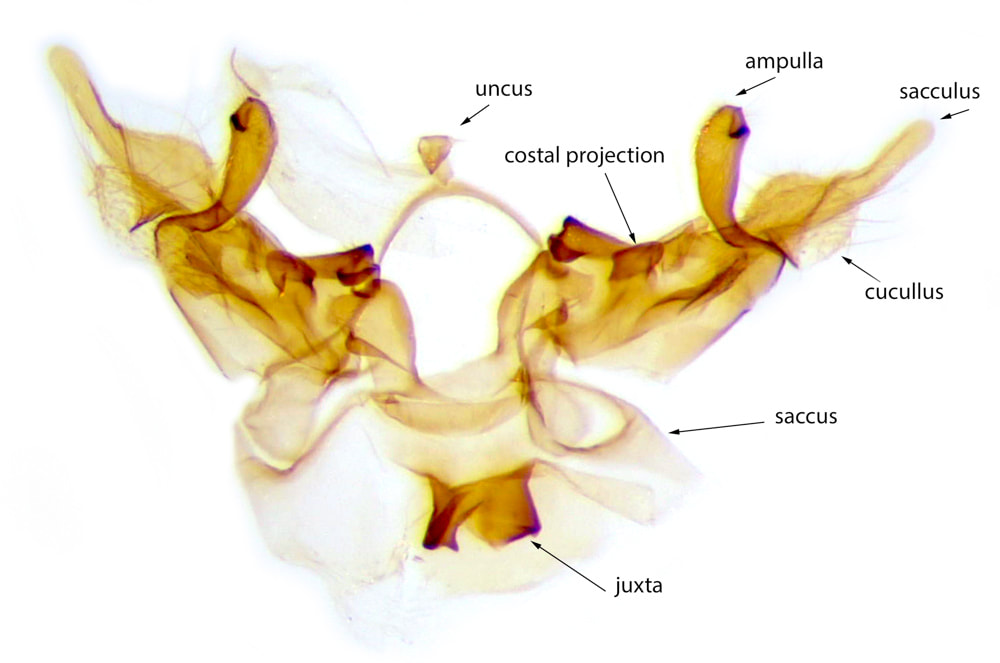34.012 Sorhagenia rhamniella (Buckthorn Shoot-borer)
ws: 8.5-10.5mm (MBGBI4.1); Jul-Aug; alder buckthorn (Frangula alnus), buckthorn (Rhamnus cathartica); NS-A in SE.England on chalk, limestone and fens
Generic features: Head smooth-scaled; ocelli present; proboscis scaled; antenna 3/4 forewing length, slightly serrate distally; scape with pecten; labial palps porrect, S2=S3; maxillary palps very short; forewing elongate with 4 patches of raised scales, V7&8 stalked, V6 separate or connected to base of V7&8, V4&5 fused; hindwing narrower than forewing, lanceolate, dorsal cilia length 2.5-3x hindwing width, V7 almost to apex. Male genitalia: uncus short; valva with separate cucullus and sacculus and large ampulla, costa often with a projection; juxta heavily sclerotised; saccus a broad sclerotised band; aedeagus short with bulbous caecum. Female genitalia: Anterior and posterior apophyses of similar length; periosteal plate heavily sclerotised with lateral projections; antrum sclerotised; ductus bursae spiculate and wrinkled; bursa copulatrix spherical with 2 signa.
ID: The 3 British Sorhagenia species cannot be reliably separated on external features. MBGBI4.1 mentions size and forewing ground colour as features favouring one or other species: 1) Size: MBGBI4.1 states that "S.rhamniella has the smallest wingspan of the three species", but quotes a nearly identical wingspan range for S.lophyrella (8-11mm). If the quoted wingspan ranges are accurate it would more correct to say that S.janiszewskae averages the largest of the 3 British species (10-13mm). 2) Forewing ground colour: ochreous-tinged in S.lophyrella.
Male genitalia: All 3 species are shown at Moth Dissection and are illustrated on p257 of MBGBI4.1; unfortunately neither of these sources labels the structures mentioned; hopefully I have been able to infer which is which correctly from the descriptions (see images below). In S.rhamniella the sacculus is distinctly longer than the cucullus and ampulla and there is a trapezoidal projection of the costa. S.lophyrella has a very short sacculus; S.janiszewskae has a long, slender ampulla and a rounded costal projection.
ID: The 3 British Sorhagenia species cannot be reliably separated on external features. MBGBI4.1 mentions size and forewing ground colour as features favouring one or other species: 1) Size: MBGBI4.1 states that "S.rhamniella has the smallest wingspan of the three species", but quotes a nearly identical wingspan range for S.lophyrella (8-11mm). If the quoted wingspan ranges are accurate it would more correct to say that S.janiszewskae averages the largest of the 3 British species (10-13mm). 2) Forewing ground colour: ochreous-tinged in S.lophyrella.
Male genitalia: All 3 species are shown at Moth Dissection and are illustrated on p257 of MBGBI4.1; unfortunately neither of these sources labels the structures mentioned; hopefully I have been able to infer which is which correctly from the descriptions (see images below). In S.rhamniella the sacculus is distinctly longer than the cucullus and ampulla and there is a trapezoidal projection of the costa. S.lophyrella has a very short sacculus; S.janiszewskae has a long, slender ampulla and a rounded costal projection.
Dissection
Male genitalia
Sacculus distinctly longer than cucullus and ampulla; trapezoidal projection of the costa
Sacculus distinctly longer than cucullus and ampulla; trapezoidal projection of the costa
Female genitalia
§1 Cranwich Common, Norfolk; 05/07/2018; male; fw 5.8mm
All images © Chris Lewis
All images © Chris Lewis
Page published 12/12/2018 (§1)












